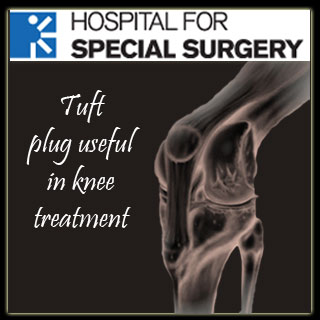
The injury to the supposed articular cartilage may take place in various ways. It could range from direct trauma in a motor vehicle mishap to a non contact, on going event on the soccer ground.
“The data has been encouraging to support further evaluation of this synthetic scaffold as a cartilage repair technique. The Trufit plug has been designed to have mechanical properties that are similar to cartilage and bone,” stated a member in sports medicine and shoulder surgery at Hospital for Special Surgery, Dr. Asheesh Bedi.
Dr. Bedi was noted to have performed analysis of MRI scans of patients mostly treated by Riley Williams, M.D., director of the Institute for Cartilage Repair at Hospital for Special Surgery.
“Articular cartilage lacks the intrinsic properties of healing – you are essentially born with the articular cartilage that you have,” says Dr. Bedi.
If these injuries are left untreated, they could increase loads placed on the remaining intact cartilage thereby increasing the possibility of advancement to degenerative arthritis. Supposedly, one method to treat patients with symptomatic chondral lesions is through an OATS process. In this process, a cartilage was noted to have been transferred from one portion of the knee to treat another. Though one problem was solved, it led to formation of a new problem; researchers hence started analyzing if they could use a biodegradable plug to fill the contributor site called the Trufit CB plug. Experts aimed at examining how the plug incorporated itself into the knee and also to assess the quality of the repair cartilage.
The Trufit plug comprises of two layers. The top layer has properties similar to cartilage and the lower layer has properties similar to bone. This two layered structure has automatic properties that nearly match the adjoining cartilage and bone. Surgeons were believed to have inserted the plug in the knees of 26 patients with donor lesions through OATS procedures. Also, they followed it up with MRI and T2-mapping at different breaks for a period of nearly 3 years.
Lead author of the research and chief of the Division of Magnetic Resonance Imaging, director of Research in the Department of Radiology and Imaging at Hospital for Special Surgery, Dr. Hollis Potter stated that, “Quantitative MRI, when combined with morphologic assessment, allows us to understand the natural history of these repair techniques and define those patients who are most likely to benefit from the surgery. We gain knowledge about the biology of integration with the host tissue, as well as the repair tissue biochemistry, all by a noninvasive imaging technique.”
Dr Bedi further added that, “What we found was that the plug demonstrated a predictable process of maturation on imaging studies that paralleled the biology of their incorporation. With increasing postoperative duration, the repair tissue demonstrated encouraging properties with T2-values that resembled native articular cartilage.”
“What is unique about this study is that we have serial MRI with T2 mapping at various time points after surgery, which allows us to really examine the natural history of plug incorporation,” confirms Dr. Bedi.
Dr. Williams stated that, “It is our hope that we can successfully treat these cartilage problems over the long term, thus restoring normal knee function and slowing the progression of knee arthritis.”
He also believes that there appears to be a role for scaffold-based cartilage repair strategies in the treatment of symptomatic cartilage lesions. It was observed that Dr. Williams, Dr. Bedi and other surgeons at Hospital for Special Surgery are occupied in ongoing studies to examine the efficacy of the Trufit plug in treating primary cartilage defects too.
This analysis will be presented between July 9-12, 2009 at the annual meeting of the American Orthopedic Society for Sports Medicine, in Keystone, Colo.
